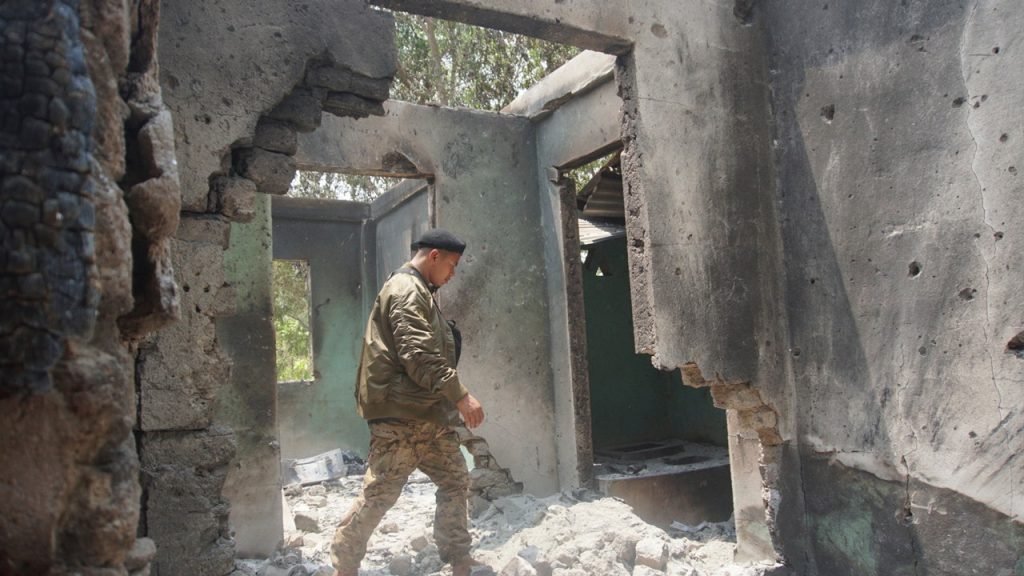Guerrilla fighters from the Karen National Union (KNU) have withdrawn from the eastern border town of Myawaddy after taking control from Burma’s military government. The armed wing of the KNU captured the town, leading to a retreat by army soldiers from Infantry Battalion 275. Another armed Karen group claimed responsibility for the town’s security, aiding the fleeing soldiers who sought safety near a river. The situation in Myawaddy is part of the larger conflict in Burma, which began after the military ousted the elected government and suppressed protests seeking a return to democratic rule.
Despite the military’s advantage in arms and manpower, it has been on the defensive since an alliance of ethnic rebel groups launched an offensive last October. Resistance forces have made significant territorial gains in various parts of the country, including the northeast, the west, and other areas. The soldiers who retreated to the vicinity of the 2nd Thai-Myanmar Friendship Bridge received some protection from the Border Guard Force, an armed Karen group that had previously been affiliated with the military. The border guards, who are now independent under the name of the Karen National Army, facilitated the soldiers’ relocation and provided them with food and weapons.
The KNU forces temporarily withdrew from Myawaddy as the Border Guard Force brought the soldiers to the abandoned Infantry Battalion 275 base. Photos circulated on social media showed some soldiers raising Burma’s flag at the base, potentially signaling a shift in control. The KNU is preparing for a potential counterattack by the military government and is keeping its units mobile rather than holding territory. The complex maneuvering in Myawaddy is a microcosm of the larger conflict between ethnic armed groups and the military in Burma.
The residents of Myawaddy have reported that the Border Guard Force has taken on a key role in maintaining security in the town. A recent small attack by the Karen guerrillas on soldiers hiding near the bridge prompted military airstrikes, forcing thousands of residents to seek shelter in Thailand. The conflict in Myawaddy illustrates the tense and volatile situation in Burma following the military coup and subsequent crackdown on dissent. The involvement of various armed groups, including the KNU, the Border Guard Force, and others, adds layers of complexity to the conflict and raises concerns about the safety and security of civilians caught in the crossfire.
As the situation in Myawaddy continues to evolve, the role of different armed groups, the military government, and residents will be crucial in determining the town’s future. The withdrawal of the KNU forces and the shifting power dynamics in the area reflect broader tensions in Burma between the military and ethnic minority groups seeking autonomy and self-determination. The ongoing conflict underscores the challenges of achieving peace and stability in a country grappling with political upheaval and violent confrontations. The residents of Myawaddy, along with the various armed groups involved, face uncertain and perilous circumstances as they navigate the complex and volatile situation in the border town.


